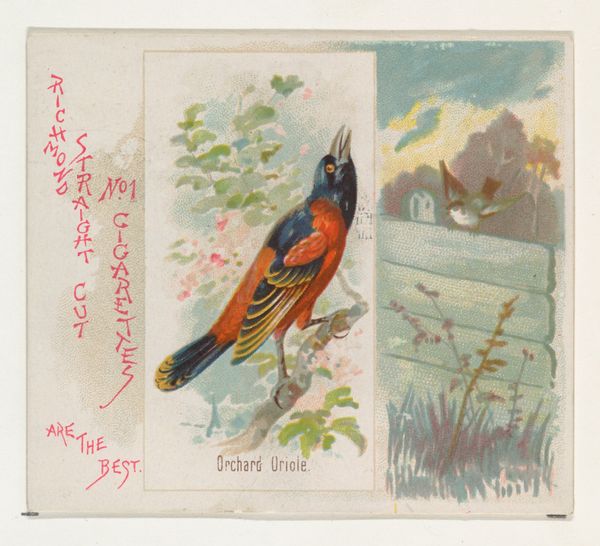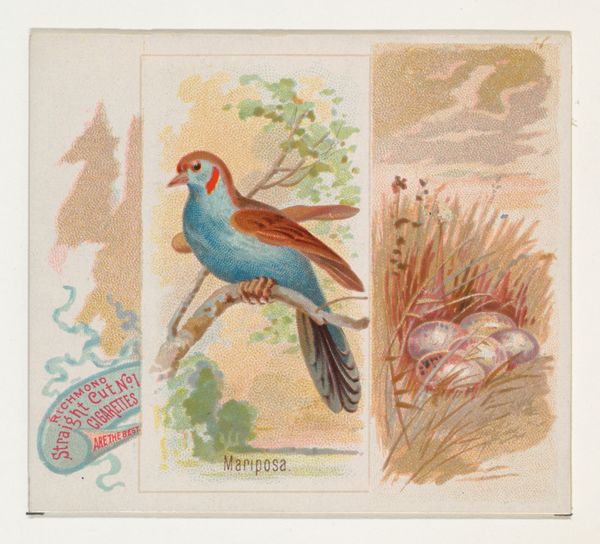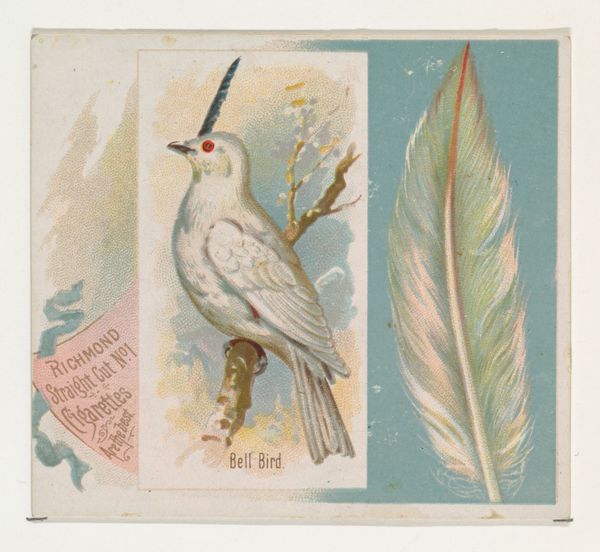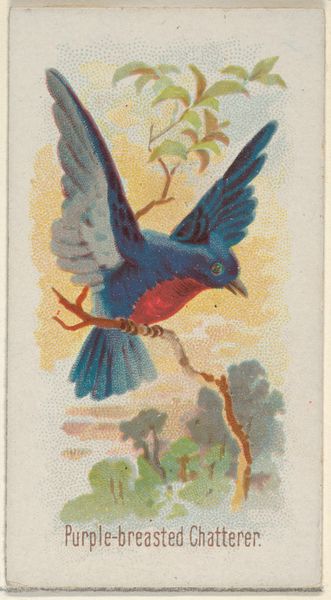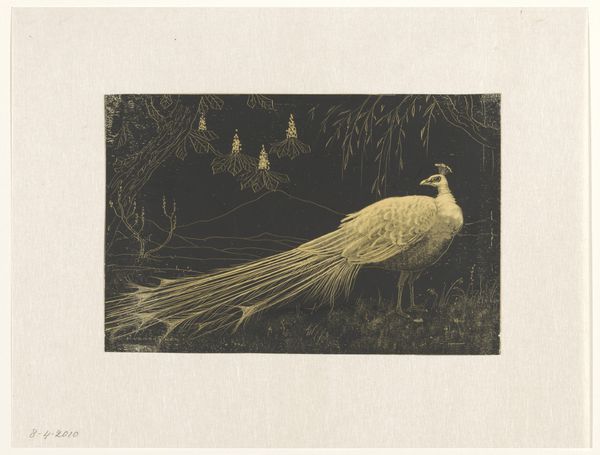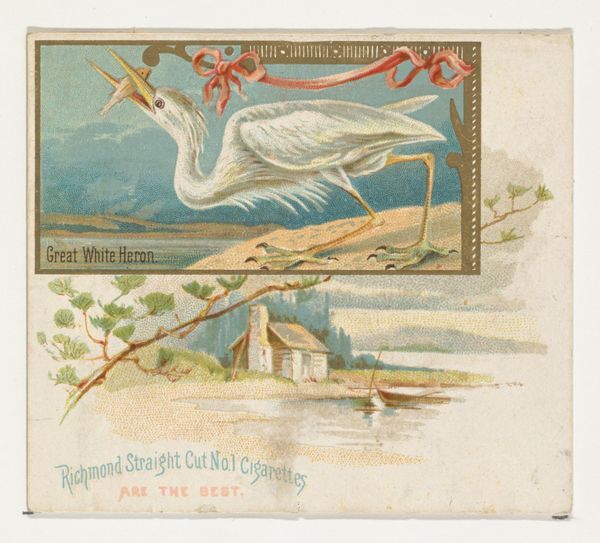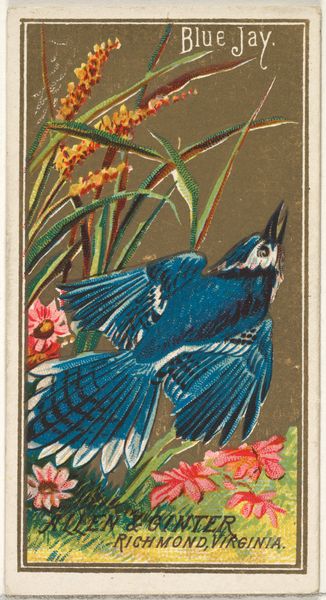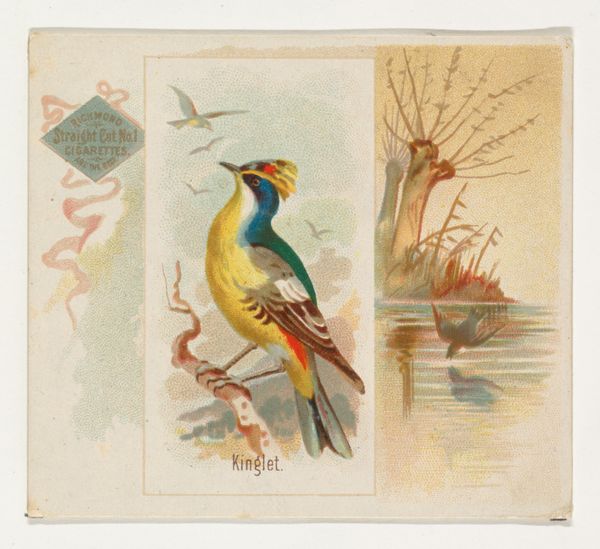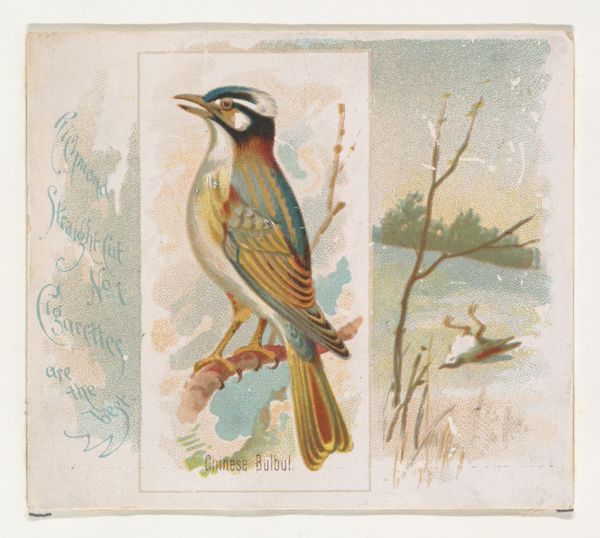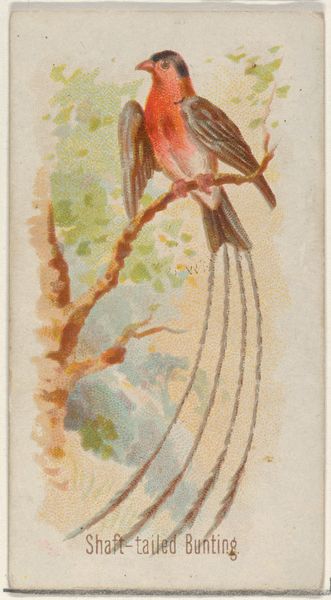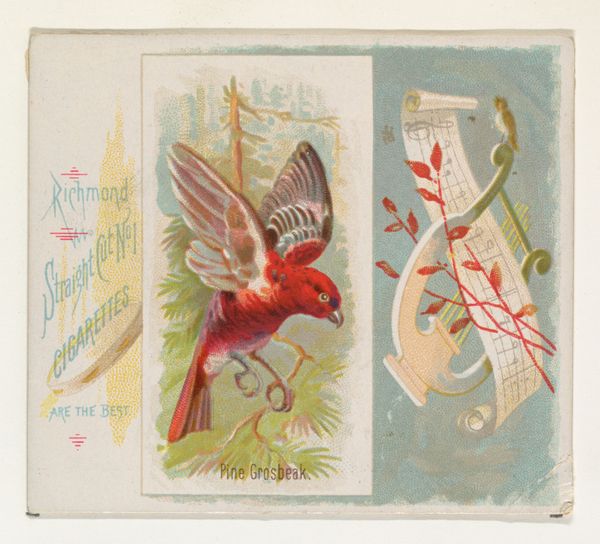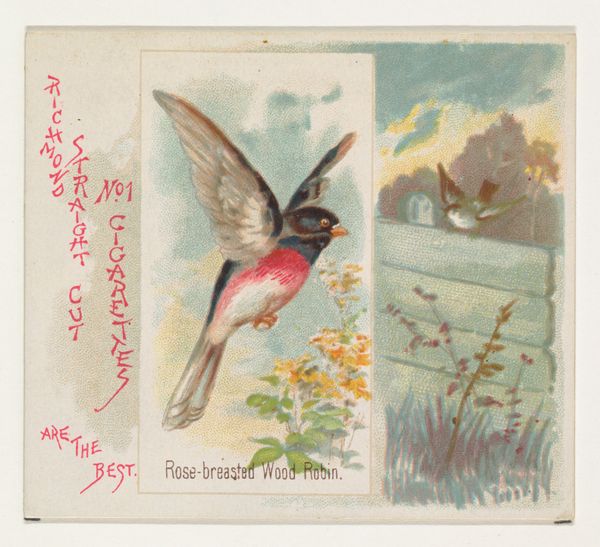
Dimensions: 11 9/16 × 16 9/16 in. (29.37 × 42.07 cm) (image)15 × 20 7/8 in. (38.1 × 53.02 cm) (sheet)
Copyright: No Copyright - United States
William Giles made "Haunt of the Jay" as a color woodcut, and right away, I’m thinking about process. You know, how the grain of the wood influences the mark. It looks like he’s using a really restrained palette—blues, browns, greens—but it’s how they bleed into each other that gets me. The texture is key. You can almost feel the grain, the way the ink sits on the surface. It makes the whole scene feel tactile, like you could reach out and touch the jay's wing, or the bark of the birch tree. I keep coming back to the jay’s wing, the way the blue fades into white, like it’s dissolving into the air. It’s loose, gestural. For me, Giles's work shares something with the prints of someone like Gustave Baumann, though Baumann is bolder, more graphic. Ultimately, it’s about that ambiguity, that feeling that there’s no one right way to see things.
Comments
minneapolisinstituteofart almost 2 years ago
⋮
Once, before making a print of swans, William Giles spent six weeks concealed in a covered punt (a narrow, flat-bottomed boat) so he could observe swans on London’s Thames River. It’s not known whether he spent a similar amount of time hiding in a tree to observe the habits of jays before making Haunt of the Jay. The orange breast makes it the Eurasian jay (Garrulus glandarius), a species in Britain also distinctive for its blue-and-black wings. Giles often printed from woodblocks in combination with zinc plates, “carving” relief designs on the metal with acid. He found that the zinc plates delivered purer color, and surely used them to print this exquisite creature coasting high above a riverbank. (Did he intentionally make the background drab to set off the bird') Despite the menacing look, the Eurasian jay is reputedly shy and is probably looking for acorns—it’s been known to find and bury as many as 11,000 per winter.
Join the conversation
Join millions of artists and users on Artera today and experience the ultimate creative platform.
